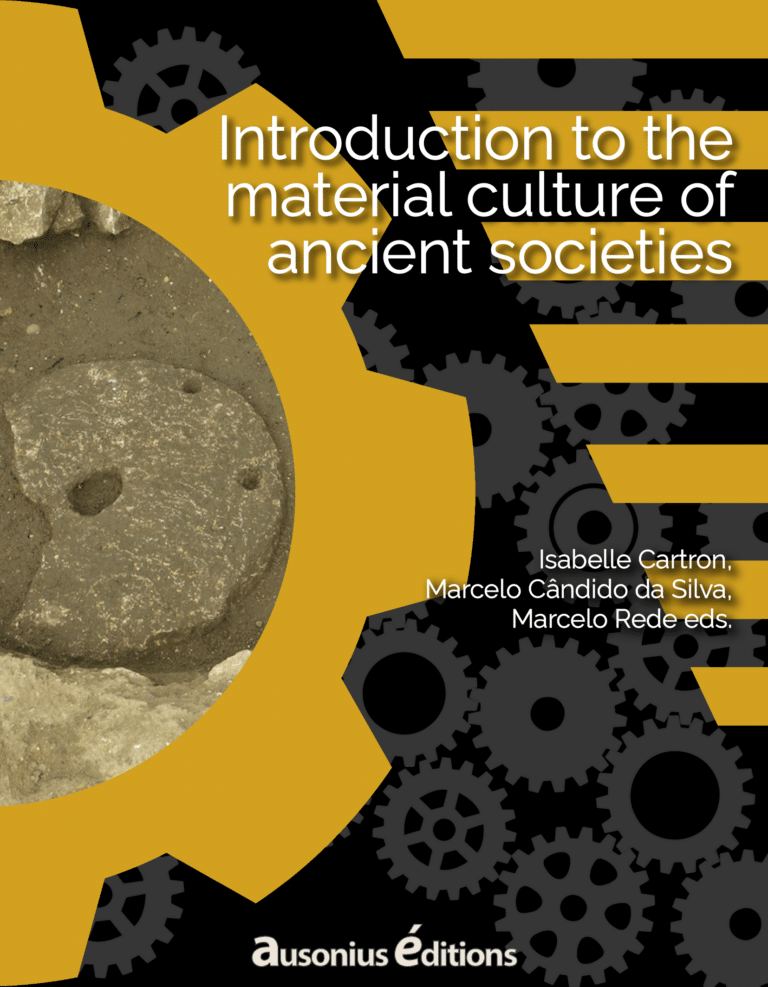The female abbey of Hamage was founded, in the mid-seventh century, by a wealthy aristocratic family. The abbey’s site, located on the banks of the Scarpe river, was excavated between 1991 and 2002 by archaeologists of the Service Archéologique Municipal de Douai, and brought to light important clues for our understanding of the eating habits of a privileged rural site during the Early Middle Ages. The bioarchaeological evidence includes 1238 animal remains, consumed by the inhabitants of the monastery between the end of the seventh and the beginning of the ninth century, of which 681 were identified.1

The analysis of the bioarchaeological evidence reveals typical signs of a site populated by the rural élites. The first one is the high percentage of swine remains: between the end of the seventh and the beginning of the ninth century, pigs’ bones correspond to 49.05% of the animal remains identified at the site, while goats correspond to 22.17%, cattle to 13.95% and poultry to 11.60%.2 This number implies a high consumption of pork among the monastery’s inhabitants, which, in the rural setting of the period, is a typical indication of a privileged site.3 The pigs’ remains, alongside those of the sheep and cattle, indicate that the animals consumed by the monastery’s inhabitants were slaughtered specifically for that end, many of which at an early age. Unlike evidence found in non-privileged sites, where most animals were consumed only in their later age, after years of providing milk, wool and other products, animals from privileged sites were often slaughtered at an early age in order to prioritize the meat’s quality over its quantity. In Hamage, the average slaughter age of piglets, for example, was around eighteen months, about half a year before the animals reached adulthood. There is evidence of pigs being slaughtered for consumption as early as six months after birth.4
The remaining percentage of animal bones discovered at the site are divided between other domesticated birds, such as geese and ducks, and some unidentified and exotic animals. A notable absence is that of fish remains, especially for a monastery located on the banks of a river. The only exception to the lack of fish remains is that of one of the exotic animals: an Atlantic sturgeon (Acipenser oxyrinchus oxyrinchus).5 Measuring up to 4.5 meters in length and over 350 kg, the Atlantic sturgeon is an extremely rare species in early medieval sites, and its consumption was restricted to the most privileged groups and sites. The high consumption of pork, the early average age of slaughter of the domesticated animals and the presence of exotic animals, especially one like the sturgeon, paints a very privileged picture of the alimentary habits of the nuns at Hamage. They had access to an extremely privileged diet, largely inaccessible to the lower strata of the Frankish rural society.

References
- Bougard, F., Le Jan, R. & McLitterick, R. ed., 2009: La culture du Haut Moyen Âge, une question d’élites ?, Turnhout.
- Clavel, B. & J.-H. Yvinec, 2010: “L’archéozoologie du Moyen Âge au début de la période moderne dans la moitié nord de la France”, in: Chapelot, ed. 2010, 71‑88.
- Chapelot, J., ed., 2010: Trente ans d’archéologie médiévale en France. Un bilan pour un avenir. Colloque de la Société d’Archéologie Médiévale, Caen.
- Gaillard, M., ed., 2014: L’empreinte chrétienne en Gaule du IVe au IXe siècle,Turnhout.
- Louis, É., ed., 1998: Fouilles programmées de l’ancienne abbaye Wandignies-Hamage. Site 5963701, (Dépt. du Nord). Document final de synthèse de l’autorisation de fouille programmée bisannuelle n° 96/045 (1996-1997), Douai.
- Louis, É., 2014: “Une église monastique du haut Moyen Âge dans le nord de la France : le cas de Hamage”, in: Gaillard, ed. 2014, 357‑385.
- Loveluck, C. (2009): “The Dynamics of Elite Lifestyles in the «Rural World», AD 600-1150: Archaeological Perspectives from Northwest Europe”, in: Bougard et al.,ed. 2009, 139‑170.



